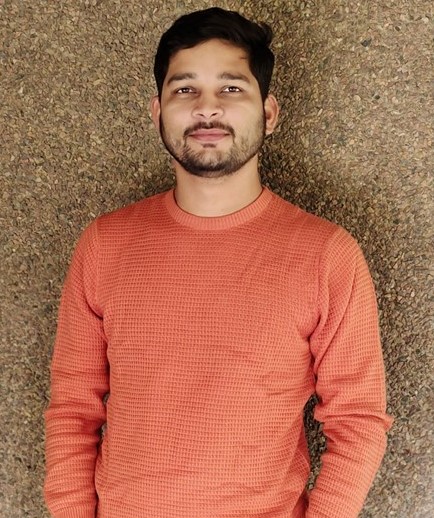FACULTY
Faculty Profile
| Address | Department of Advance Spectroscopy and Imaging, Center of Biomedical Research (CBMR) SGPGIMS Campus, Raebareli Road Lucknow 226014, Uttar Pradesh, India | ||
|---|---|---|---|
| Building | Old Building | Room no | 210 |
| Lab no: | 211 | Intercom: | 241 |
| Email: | uttam@cbmr.res.in | ||
| Url | https://uttambrainlab.co.in/labs/ | ||
Research Interest
We are interested in examining the network-level structural and functional brain connectivity, changes, and function in the healthy and disease brains. Our multimodal approach permits us to investigate the complex relationship between neural activity and its function.
About
Research
In our laboratory, we employ sophisticated neuroimaging methodologies, specifically functional Magnetic Resonance Imaging (fMRI) and Magnetic Resonance Imaging (MRI), as pivotal tools for the quantitative assessment of alterations associated with brain pathologies.
By leveraging the power of these advanced imaging techniques, we can elucidate the intricate and often subtle neural changes accompanying various medical conditions. Our multidisciplinary approach, synthesizing cutting-edge technology with profound biomedical insights, provides a comprehensive platform for the visualization and quantification of disease-associated modifications in the brain, paving the way for potential therapeutic advancements.
Group Members

Himanshu R Pandey
I hold a Bachelor's degree in Electronic Science with Honours from Delhi University and a Master's degree in Electronic Science from Gorakhpur University. My current role as a Junior Research Fellow is focused on investigating the effects of tinnitus on brain using an in-house 3T MRI Scanner. To achieve this, I am using a range of techniques, including tonotopic mapping, fMRI, neural connectivity, and advanced task-based connectivity analysis. My aim is to gain a deeper understanding of the neural mechanisms underlying tinnitus and its impact on the brain's functioning. By utilizing cutting-edge neuroimaging techniques, I am able to study the changes in neural activity and connectivity that occur in response to tinnitus, which can help inform the development of more effective treatments for this condition.

Kalpana Dhanik
I received my Bachelor's degree in Zoology, Botany, and Chemistry, followed by a Master's degree in Microbiology. My broad interests lie in the fields of Cognitive and Computational Neuroscience, and I have a special passion for Magnetic Resonance Imaging (MRI) and its potential to further our understanding of the brain. I am working as a Project Associate. My current research is focused on investigating the compensatory plasticity, learning, and adaptation that occur in the brain in response to sensory loss. This is a fascinating area of study that has important implications for understanding the mechanisms underlying the brain's ability to adapt and compensate for changes in sensory input. To conduct this, I am using a variety of tools and techniques, including structural and functional connectivity analysis, which allow to explore the complex network of connections within the brain and understand how they are affected by sensory loss.
Publications
Few representive Publication: (For detail: https://scholar.google.com/citations?user=U0L_OrAAAAAJ&hl=en)
1) Singh, A., Arya, A., Agarwal, V., Shree, R., & Kumar, U. (2022). Computing brain cortical complexity in euthymic children with bipolar disorder: A surface-based approach. Asian Journal of Psychiatry, 80.
2) Hervais-Adelman, A., Kumar, U., Mishra, R. K., Tripathi, V. N., Guleria, A., Singh, J. P., & Huettig, F. (2022). How does literacy affect speech processing? Not by enhancing cortical responses to speech, but by promoting connectivity of acoustic-phonetic and graphomotor cortices. Journal of Neuroscience.
3) Kumar, U., Arya, A., & Agarwal, V. (2022). Altered functional connectivity in children with ADHD while performing cognitive control tasks. Psychiatry Research: Neuroimaging, 111531.
4) Kumar, U, Keshri, A, Mishra, M. Alteration of brain resting-state networks and functional connectivity in prelingual deafness. J Neuroimaging. 2021; 1-11.
5) Kumar, U., Singh, A., & Paddakanya, P. (2021). Extensive long-term verbal memory training is associated with brain plasticity. Scientific Reports, 11(1), 1-12.
6) Singh, A., Arya, A., Agarwal, V., Shree., J., Kumar, U.* (2021). Grey and white matter alteration in euthymic children with bipolar disorder: a combined sourceâ€based morphometry (SBM) and voxelâ€based morphometry (VBM) study. Brain Imaging and Behavior (2021). https://doi.org/10.1007/s11682-021-00473-0
7) Kumar, U., Singh, A., & Mishra, M. (2020) White matter alteration in adults with prelingual deafness: A TBSS and SBM analysis of fractional anisotropy data. Brain and Cognition, 148, 105676.
8) Kumar, U., Arya, A. & Agarwal, V. (2020). Neural network connectivity in ADHD children: an independent component and functional connectivity analysis of resting state fMRI data.. Brain Imaging and Behavior.
9) Hervais-Adelman, A., Kumar, U., Mishra, R. K., Tripathi, V. N., Guleria, A., Singh, J. P., ... & Huettig, F. (2019). Learning to read recycles visual cortical networks without destruction. Science Advances.
10) Kumar, U. & Padakannaya, P. (2019). The effect of written scripts’ dissimilarity over ventral and dorsal reading pathway: combined fMRI & DTI study. Interdisciplinary Journal of Reading & Writing. https://doi.org/10.1007/s11145-019-09952-9.

